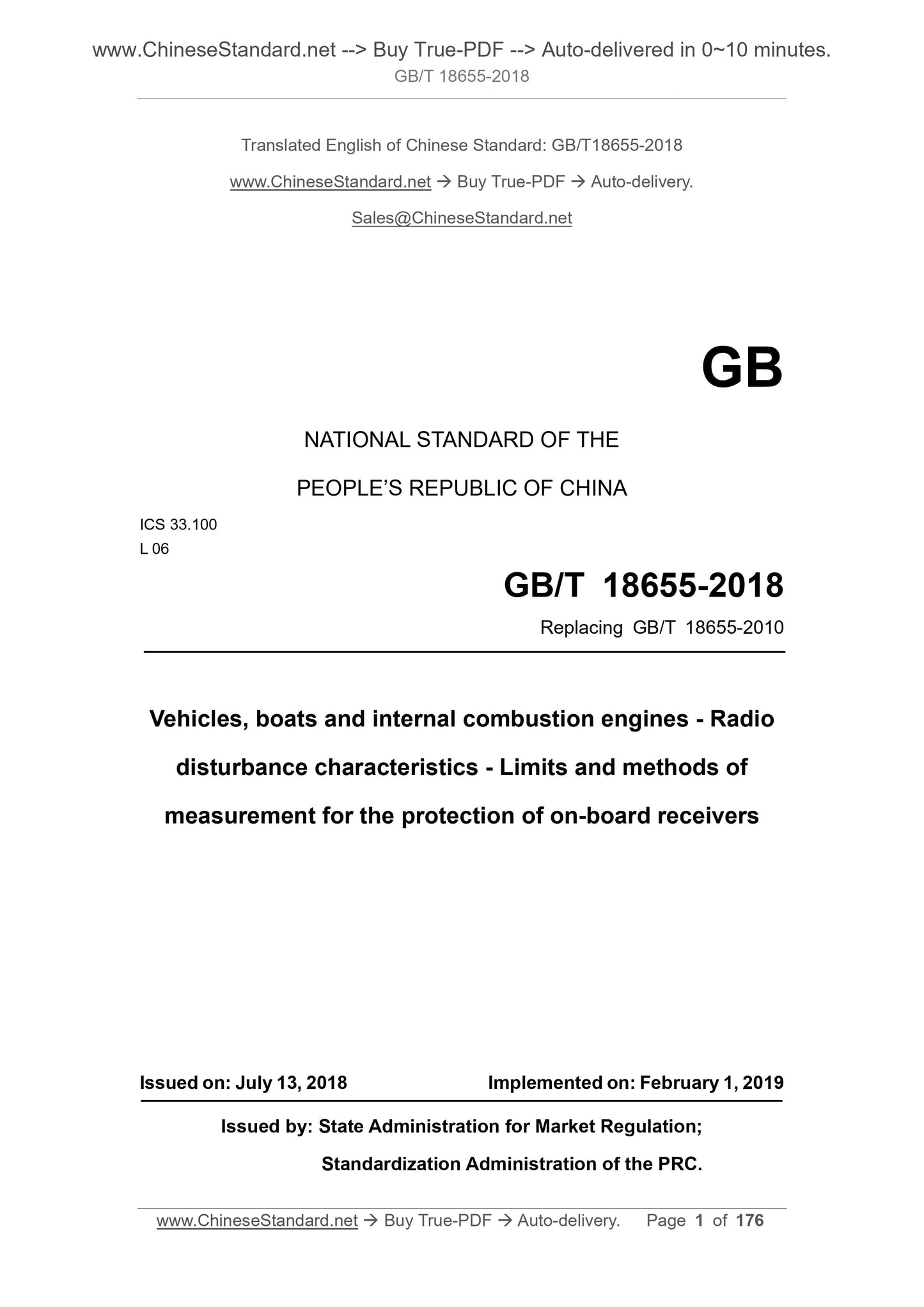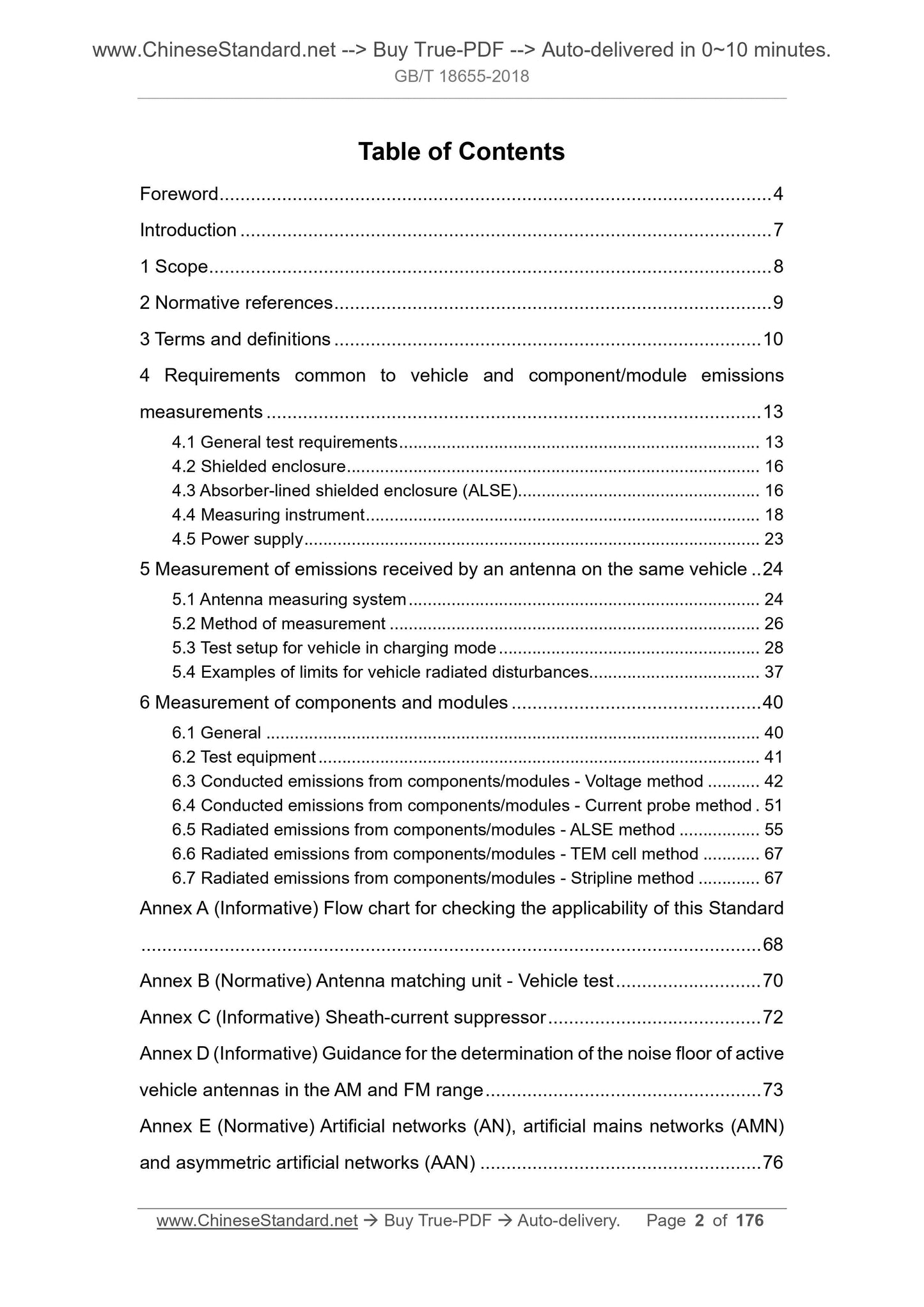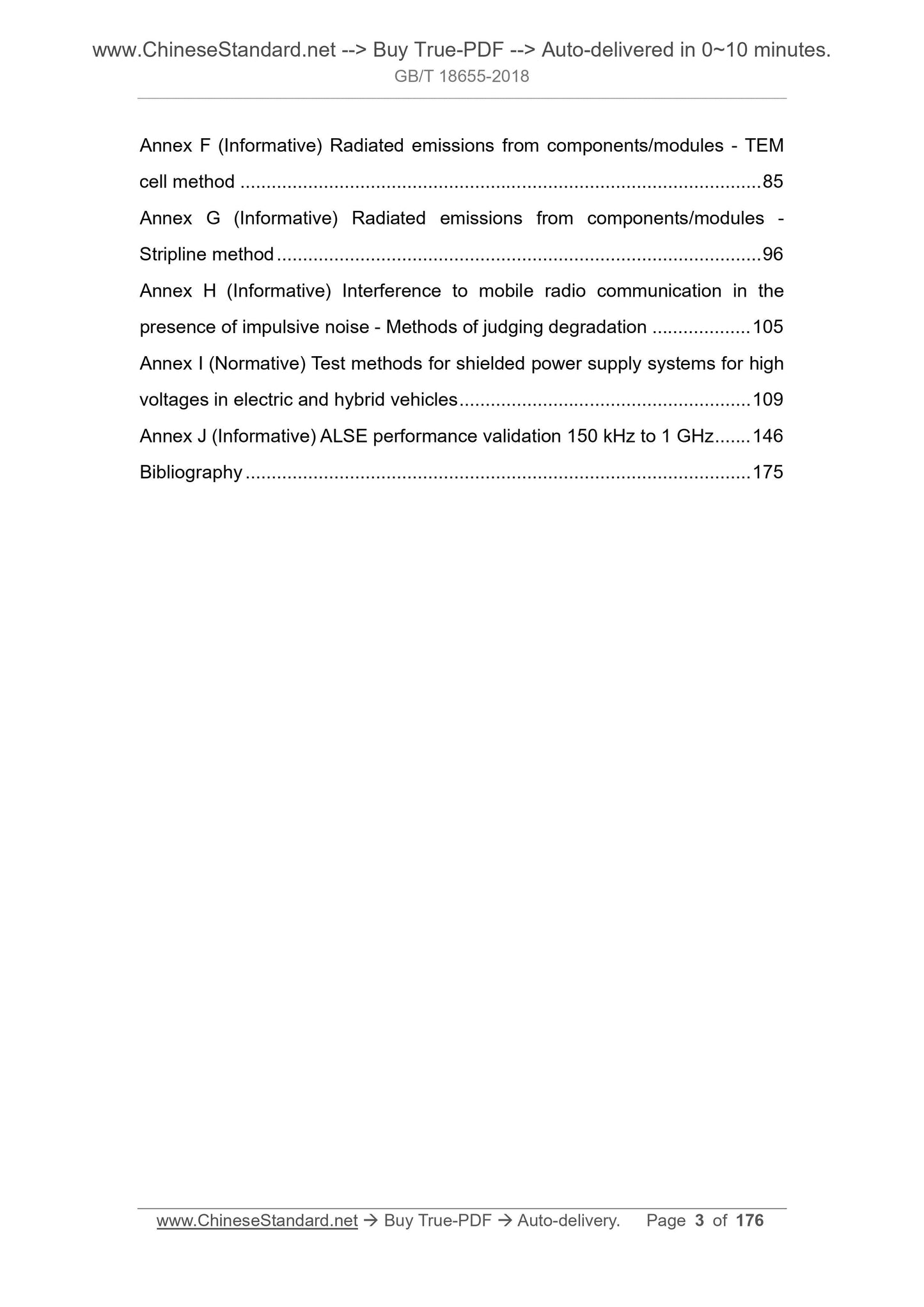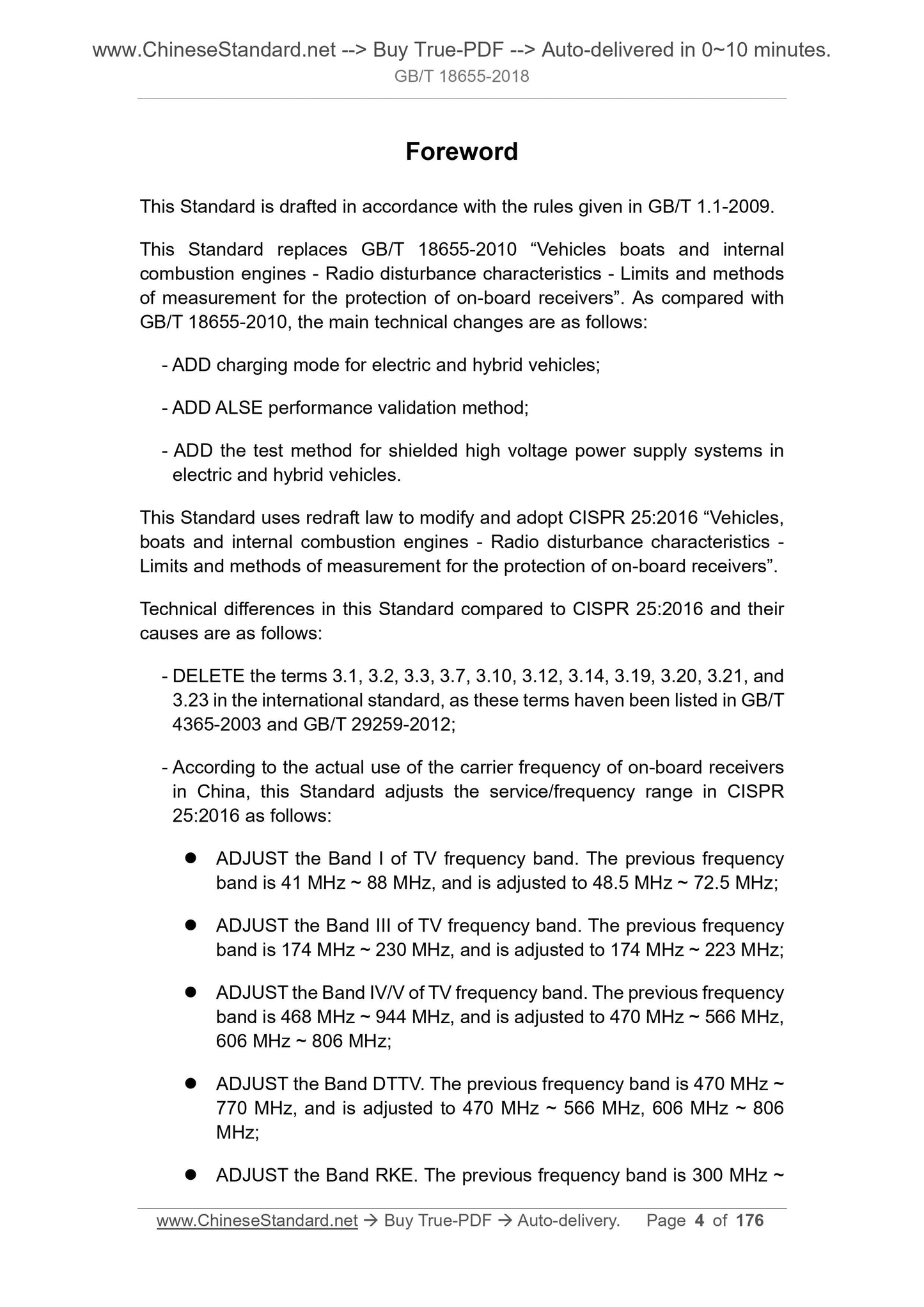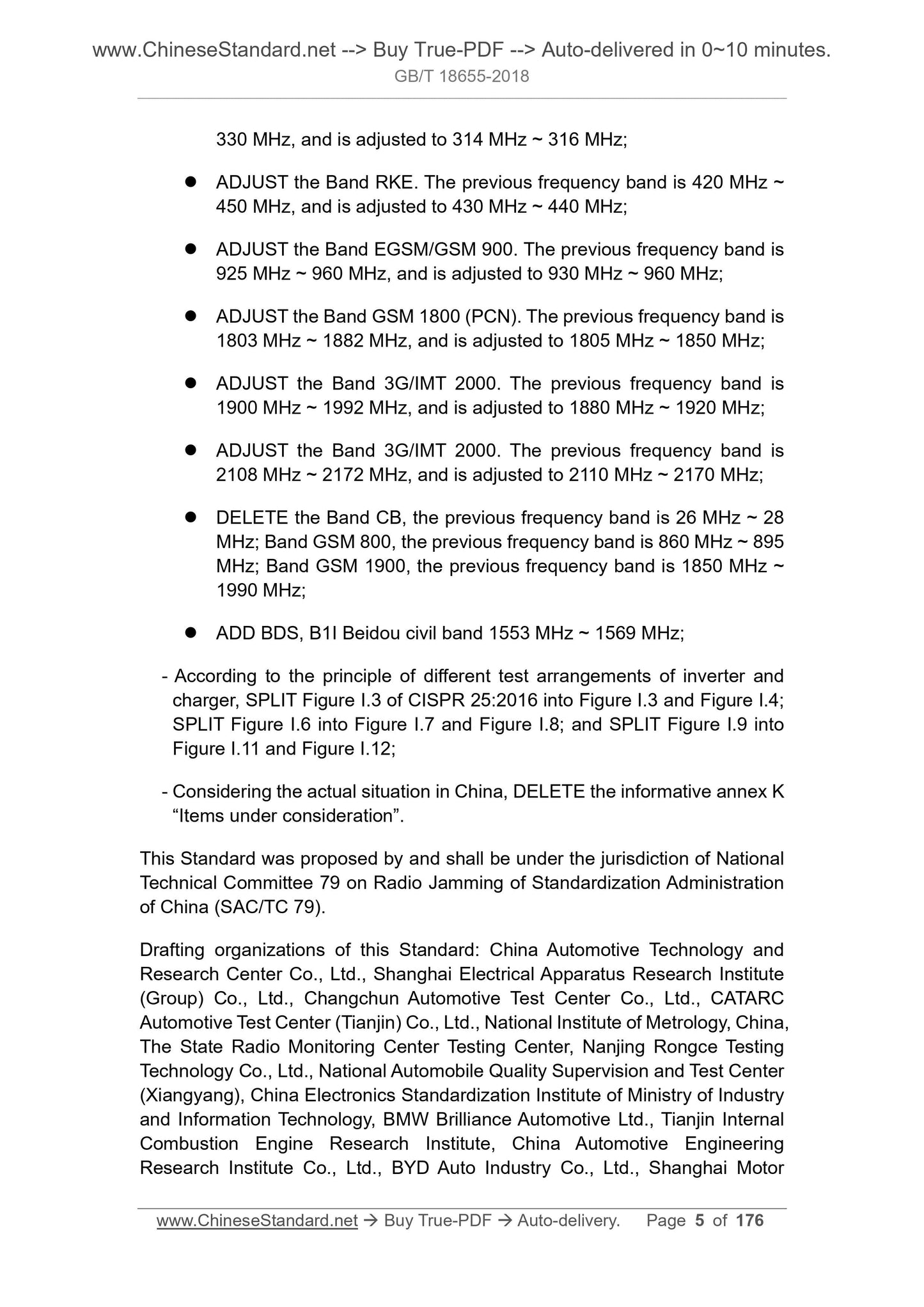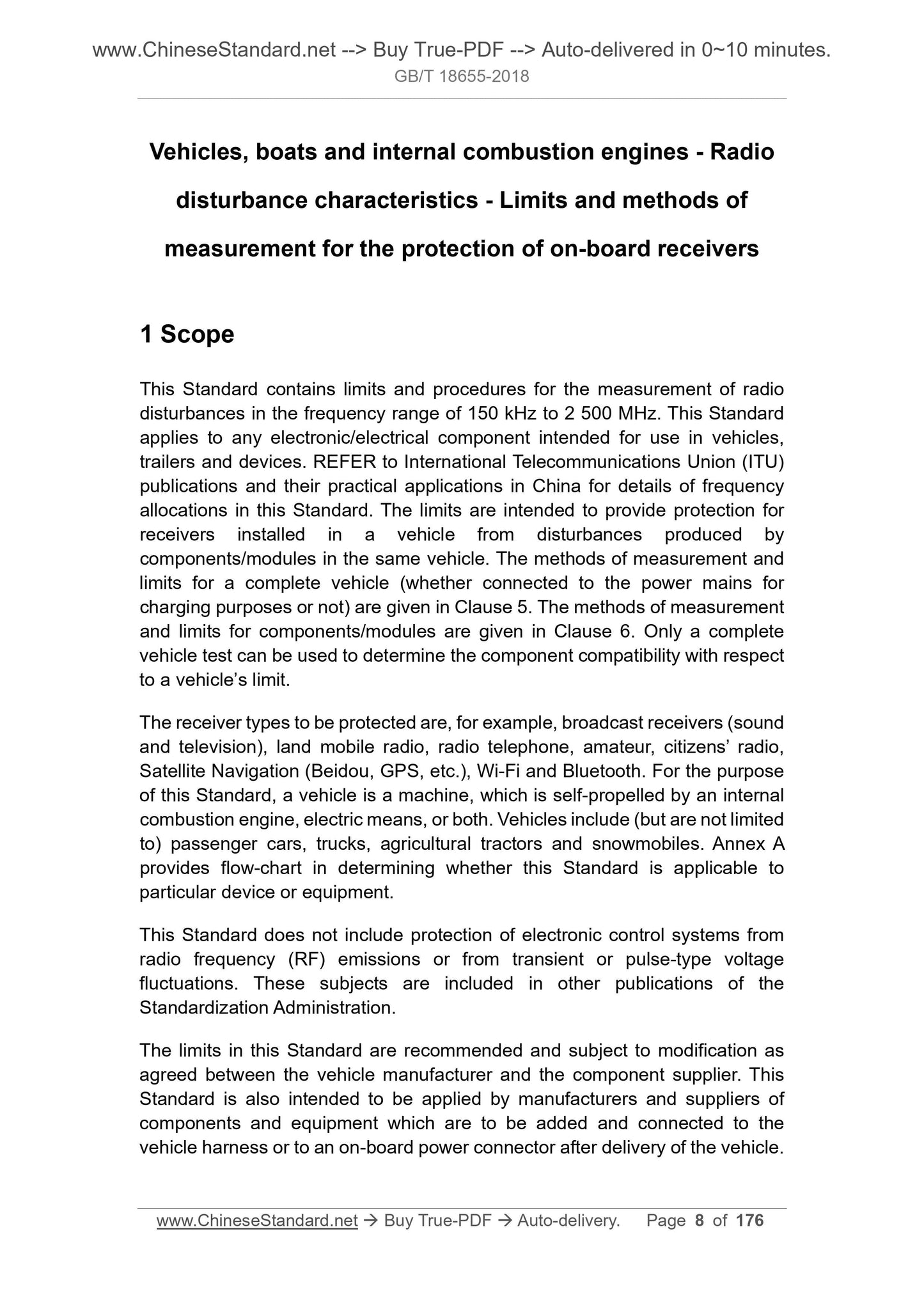1
/
of
6
www.ChineseStandard.us -- Field Test Asia Pte. Ltd.
GB/T 18655-2018 English PDF (GB/T18655-2018)
GB/T 18655-2018 English PDF (GB/T18655-2018)
Regular price
$305.00
Regular price
Sale price
$305.00
Unit price
/
per
Shipping calculated at checkout.
Couldn't load pickup availability
GB/T 18655-2018: Vehicles, boats and internal combustion engines -- Radio disturbance characteristics -- Limits and methods of measurement for the protection of on-board receivers
Delivery: 9 seconds. Download (and Email) true-PDF + Invoice.Get Quotation: Click GB/T 18655-2018 (Self-service in 1-minute)
Newer / historical versions: GB/T 18655-2018
Preview True-PDF
Scope
This standard specifies the radio disturbance limits and test methods from 150 kHz to 2500 MHz. This standard applies toAny electrical/electrical components used in vehicles, trailers and installations. The details of the frequency distribution in this standard refer to the International Telecommunication Union (ITU).
Publications and practical applications in China. The limits in this standard are used to protect the vehicle receiver from the same in-vehicle parts/modules.
The harassment generated by the block. Chapter 5 provides methods and limits for the measurement of the entire vehicle (whether connected to the grid or not). Chapter 6 provides the parts.
Method and limit for component/module measurement. Only vehicle tests based on vehicle limits can be used to finalize component compatibility.
Types of protected receivers include. broadcast receivers (sound and television), terrestrial mobile communications, wireless telephones, amateur, civilian
Line equipment, satellite navigation systems (Beidou, GPS, etc.), Wi-Fi and Bluetooth devices. The vehicles in this standard are internal combustion engines, electric power or both.
Achieve a self-driven device together. Vehicles include, but are not limited to, passenger cars, trucks, farm tractors, and snowmobiles. Can refer to Appendix A
The flowchart in the determination device or device is applicable to this standard.
This standard does not cover the protection of electronic control systems from radio frequency (RF) emissions, transients or pulse voltage fluctuations. These include
In other Standards Committee publications.
The limits in this standard are recommended and can be changed subject to agreement between the vehicle manufacturer and the component supplier. This standard also
Applicable to vehicle manufacturers, parts and equipment suppliers, attached and connected to vehicle wiring harness or vehicle power connector after vehicle delivery
Parts and equipment.
Since the installation location, body structure and harness design affect the coupling of radio disturbances to the onboard receiver, Chapter 6 defines various limits.
Value level. The level of use used (as a function of the frequency band) is subject to agreement by the vehicle manufacturer and the component supplier.
The test methods defined in this standard are intended to help vehicle manufacturers and suppliers improve vehicle and component design to ensure on-board RF emissions.
Shooting control is at a certain level.
The vehicle test limit is used as a guideline based on the case where a typical radio receiver uses a vehicle antenna, if this particular
For the antenna, a test antenna is used. For economic reasons, vehicle manufacturers should independently determine which frequency bands are used for possible radio services in the vehicle.
For example, although the TV band occupies a significant portion of the radio spectrum, many models may not have a TV receiver installed.
It is not economical to test and improve noise sources in this band on such vehicles.
In 1979, the World Management Radiocommunication Conference (WARC) limited the low frequency of the first zone to 148.5 kHz. In terms of vehicles,
A 150 kHz test is sufficient.
See Appendix E for manual networks for conducted disturbances and vehicle charging mode measurements.
A qualitative method for determining the degradation of radio communication in the presence of impulsive noise can be found in Appendix H.
The test methods for high-voltage power systems for in-vehicle shielding of electric and hybrid vehicles are given in Appendix I.
See Appendix J for the performance verification method for ALSE for component testing.
Basic Data
| Standard ID | GB/T 18655-2018 (GB/T18655-2018) |
| Description (Translated English) | Vehicles, boats and internal combustion engines -- Radio disturbance characteristics -- Limits and methods of measurement for the protection of on-board receivers |
| Sector / Industry | National Standard (Recommended) |
| Classification of Chinese Standard | L06 |
| Classification of International Standard | 33.100 |
| Word Count Estimation | 130,189 |
| Date of Issue | 2018-07-13 |
| Date of Implementation | 2019-02-01 |
| Older Standard (superseded by this standard) | GB/T 18655-2010 |
| Regulation (derived from) | National Standard Announcement No. 10 of 2018 |
| Issuing agency(ies) | State Administration for Market Regulation, China National Standardization Administration |
Share
